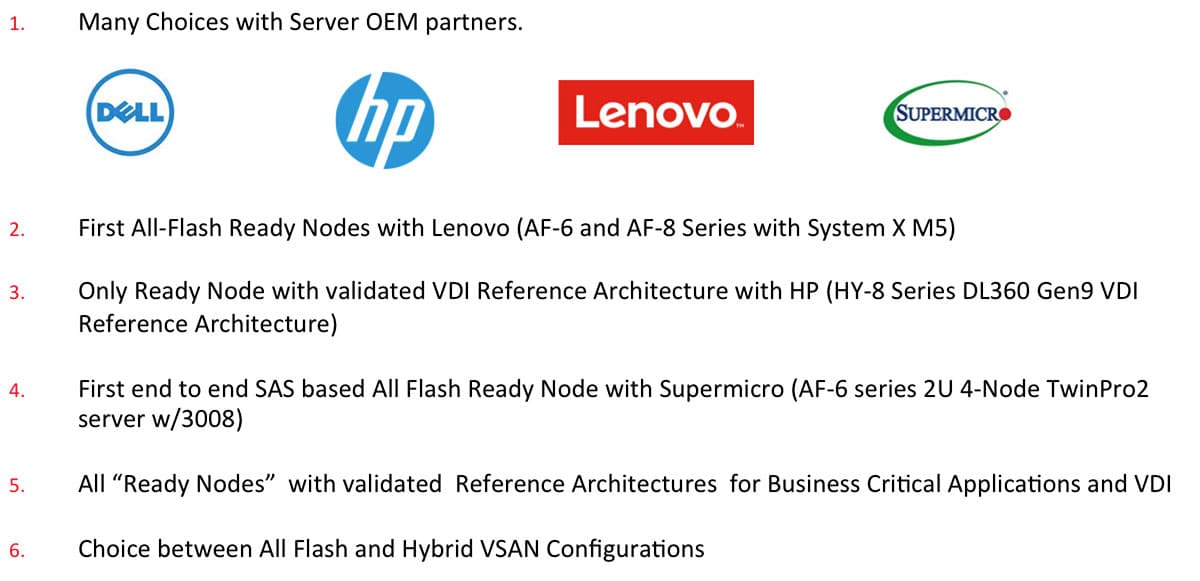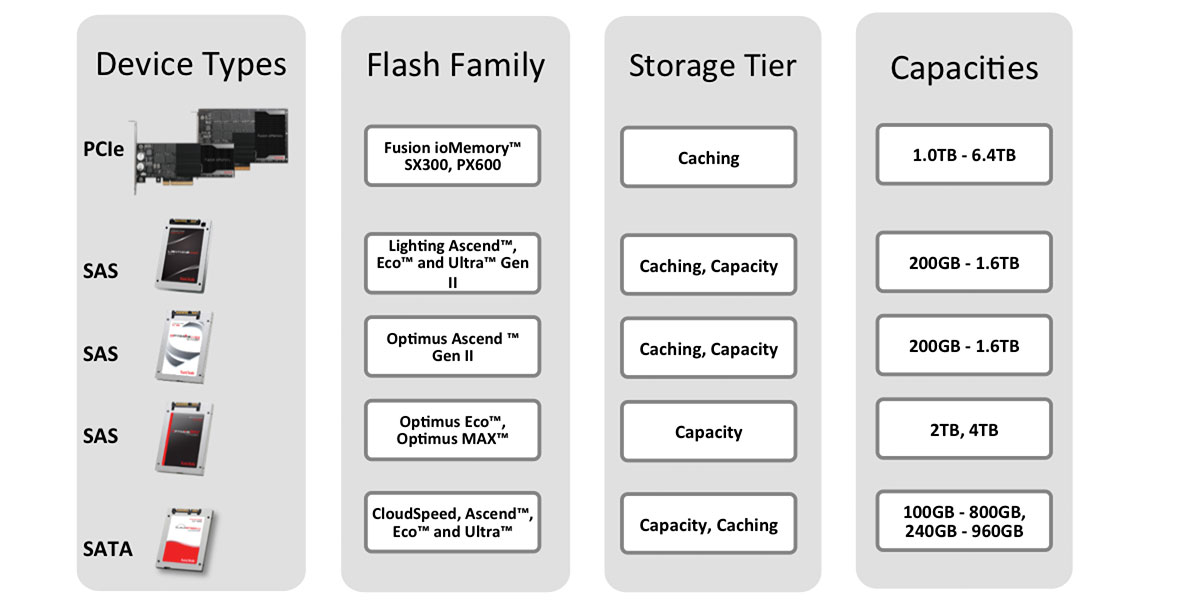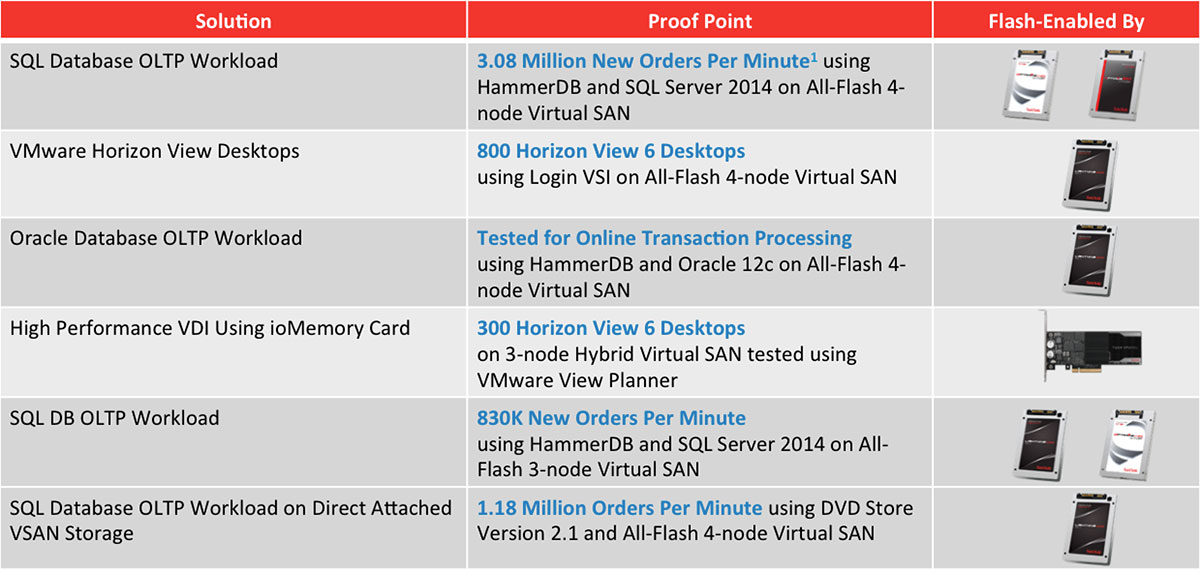2015: A Year of Hyper-Converged Infrastructure
It’s been an exciting year for us here at SanDisk® and our technology partners, and I am personally thrilled to see the interest among customers and partners on hyper-converged infrastructure (HCI). When I look back to the initiatives of last year, people were often skeptical about this new technology adoption but this year has shown a paradigm shift in thinking. This is indeed exciting!
Last week at the Gartner Data Center, Infrastructure & Operations Management Conference, I could see this same message echoed and I thought to summarize some key points on why I see this as promising technology and talk about our extensive work with this new storage technology, particularly with VMware Virtual SAN (VSAN) and its ecosystem.
Why HCI is Gaining Popularity
One of the main and obvious reasons for HCI adoption is the reduction in hardware procurement cost or CapEx. This is due to the fact that the storage used in HCI is direct attached and customers no longer need to invest with upfront cost for SAN procurement.
Second is the speed of deployment. Storage and server admins who are involved in the installation and configuration of any traditional environment can understand it better than anyone else! Server and storage admins need to work separately to configure each individual component to make them connect to one other before the system becomes operational. Any change on a decided configuration is a big deal and further delays deployment. But HCI delivers a more “pay as you grow” structure and offers a great fit for new generation agile application deployment strategy.
Lastly, is ease of management. Traditionally, we have had a separate management interface for storage and servers to manage their respective elements. With HCI, you have one single pane of glass which includes all the management functions. Moreover, with virtual machine-based storage policy, the high availability and performance definition of the application are abstracted from the storage and made flexible for each application running inside the virtual machine.
SanDisk and VMware Virtual SAN
In the past year we have done a lot of work with our partners at VMware around their Virtual SAN (VSAN) solution. You can follow some the different testing, configurations and reference architectures on this blog. I wanted to discuss some of the different deployment options of VMware VSAN using SanDisk flash
Virtual SAN – Ready Nodes
As VMware defines it: “Virtual SAN Ready Node is a validated server configuration in a tested, certified hardware form factor for Virtual SAN deployment, jointly recommended by the server OEM and VMware. Virtual SAN Ready Nodes are ideal as hyperconverged building blocks for larger data center environments looking for automation and a need to customize hardware and software configurations.”
In my opinion Ready Nodes are the easiest way to start exploring hyperconverged infrastructure. End customers do not need to worry about which configurations to choose and simply select a particular ready node to deploy.
SanDisk has worked closely with our OEM partners to create different Ready Node configurations. Each Ready Node is unique, this image explains why:

There are many choices for customers so that they can continue to work with their preferred vendor. Details of these Ready Nodes can be found in VMware VSAN Ready Nodes compatibility guide.
Virtual SAN – Build Your Own
I always say that no one size fits all requirements, and it is indeed true here, too. Customers will have many applications that will need different performance and capacity beyond a Ready Node configuration. We understand this need and for this reason we made sure to offer customers the largest portfolio of supported flash drives for VSAN HCL.

You can find these SanDisk SSDs and applications accelerators and their details in the VMware VSAN Build Your Own area. Select “SSD” and partner as “SanDisk” to see the complete list.
Enterprise Readiness of Virtual SAN
We’re really excited about Virtual SAN and for this reason we didn’t stop ourselves at creating the largest portfolio of flash drives for VSAN or by being part of Ready Nodes with our OEM partners. We went beyond that to validate some of the business critical applications our customers use and to help create awareness and build confidence among customers to help adopt this next generation storage technology.
Here is a summary of the enterprise workloads we have validated in “Ready Nodes” as well as by using a “Build Your Own” approach:

Conclusion
In my view, the adoption of HCI will continue to grow manifold. SanDisk is well positioned with VSAN ecosystem partners like Dell, HP, Lenovo, Supermicro, Cisco from server side and Brocade, Arista, Mellanox from network side.
Finally, I want to thank all my readers for their wonderful comments and feedback to my blogs over the past year! This is a great encouragement to write and 2016 will see more of it. I wish everyone a very happy new year and all the best for 2016!
As always, I can be reached at biswapati.bhattacharjee@sandiskoneblog.wpengine.com or on LinkedIn




